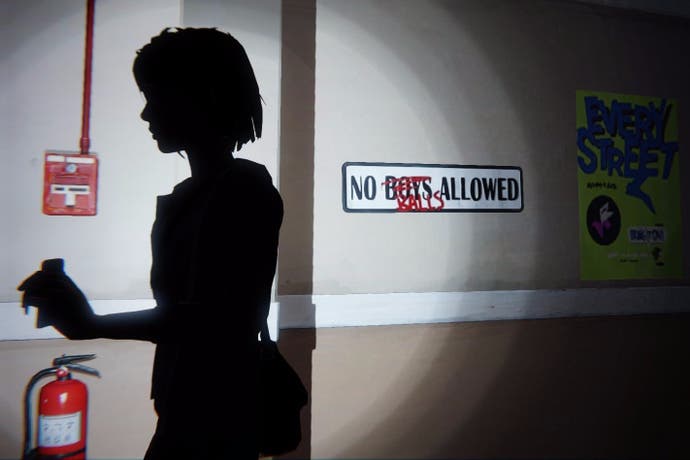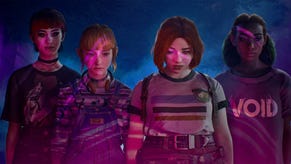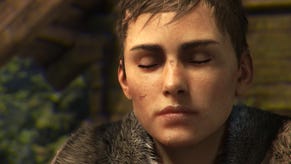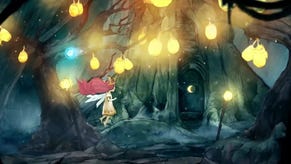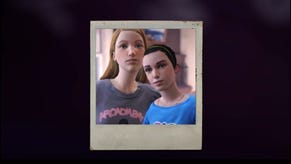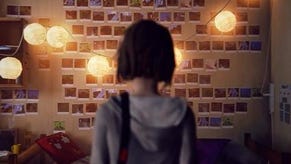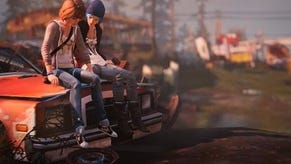Forget the fantasy, Life is Strange finds its soul in the real world
'I don't exactly know what I mean by that, but I mean it.'
The best thing I ever read about Ray Bradbury, the sci-fi and horror author, occasional screenwriter, and eternal manchild, was an article that criticised his imagination. This is heresy, of course, and to make matters worse I've misplaced the article in question. Bear with me nonetheless: according to this writer, while Bradbury's widely lauded for his powers of invention, in truth his strengths lie elsewhere. His rocketships, his space travellers, his dystopias are flimsy and lacklustre. His real genius was for memory, rather than imagination - for decade-old griefs, lapsed friendships and childhood fears. Those fears! So clinically reconstructed years after the tears had run and the sweat had dried. Bradbury thrived on ghosts, not aliens, and his best material was found in the past rather than the future.
I was reminded of this while playing through the first three parts of Life is Strange, an episodic game series that gives Bradbury an early - and prominent - mention, via a battered paperback of The October Country that's been loaned between central characters. The October Country would be an ideal alternate title for Life is Strange in fact, summoning images of sparse pines dappled with golden evening light, of wind and of wistfulness. The connection with Bradbury goes deeper than name-checking, too. At just over the halfway mark, Life is Strange offers an increasingly familiar mixture of ingredients. It's science fiction, but the science fiction doesn't initially convince. What convinces are the more human realities of the game that the science fiction elements seek to illuminate - the memory rather than the imagination.
Even then, it doesn't convince in quite the way you might initially expect. Appropriately for a game about a photography student trying to fit in at an up-market academy, Life is Strange views the world through a series of lenses. Not all of them are intentional, I suspect, but together they create a peculiarly appealing atmosphere. There's the lens brought by what I imagine - possibly incorrectly - to be a development team largely in its mid- to late-30s, struggling to approximate the language of modern teenagers - and burying those teenagers alive at times under an avalanche of hellas and biatches that has thankfully abated somewhat by episode three. There's the lens of Europeans creating a depiction of life in sleepy Oregon, with Paris-based Dontnod delivering a dreamy blossom-pink vision of Americana that gains a certain exoticism through the awkwardly concealed outsider perspective.
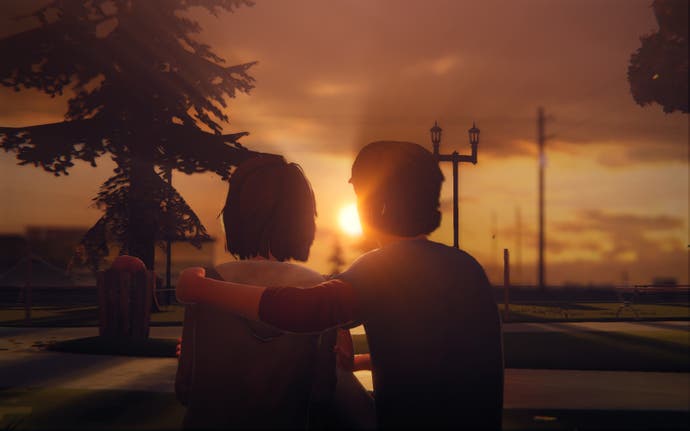
There's the lens of aging tech, with simple character models and poor lip-synching all adding a woozy sort of Lynchian distancing effect that the material genuinely clicks with. Speaking of Lynch, there are all those references to his work and other pieces of cherished art, from that Bradbury paperback to a licence plate that reads TWNPKS and the fact that the central character's surname is Caulfield. Her full name's Max Caulfield, come to think of it, which could also be a good description of the tone the developers are shooting for. 'Get me Salinger, but like, maximum Salinger.'
And yes, there's that final lens of science fiction. Max Caulfield's a girl with a secret: she can stop time at a moment's notice and rewind it a few seconds, changing the past and impacting the present. As for the future? Turns out there's a certain sci-fi flavour to that, too. Caulfield's been granted the vision of a terrifying storm that will destroy the small town where she lives in the next few days. While she waits for that, the entire world seems to be coming apart in anticipation, snow falling out of season, and solar eclipses swinging in unscheduled.
The whole thing can be heavy-handed and ponderous at times, and as a game that hinges on time travel and narrative choice, there are inevitable annoyances that crop up while you separate the elements you're allowed to change from the elements that must remain fixed because the designers need to rely on them. Here's the thing, though: none of these shortcomings really matter. Neither does the moment about 20 minutes into the first episode where I found Max trapped outside of her dorm room while a handyman's ladder teetered nearby, and I suddenly remembered, Oh God, it's an adventure game, isn't it? Dontnod might paint its world with a broad and often ragged brush, but there's a vivid truth to be found in Life is Strange, and it shifts the game beyond its failings. I expected a sort of ironic detachment what with all these teens, all these references. Instead, Life is Strange is elevated by a kind of clumsy passion: it offers one of the most interesting depictions of childhood I have ever seen in a game - and over time it has started to feel accurate.

Ignore the over-worked dialogue with its smothering research by way of the Urban Dictionary and you see a world built of deft observations: the way a dreamboat teacher who just wants to be down with the kids leans against his desk to deliver his lectures rather than standing before the blackboard. The way that Warren, a science nerd who burns a candle for Max has to turn a potential hug into a sort of awkward head scratch when she doesn't respond or even notice his intentions.
Speaking of Max, superpowers to one side Life is Strange captures the isolation of a new girl in a posh school brilliantly whenever she steps out of the classroom and the corridors of the Blackwell Academy are suddenly filled with overlapping voices, hectic conversations and arguments that are happy to go on without her. It's a very precise achievement, this: putting you into the shoes of a person whose defining characteristic is that they feel like they're under glass, several steps removed from their own world in the first place. Meanwhile, behind closed doors, we get the kind of gentle, perceptive examination of private life that games rarely make room for: the colourful warping shapes that fill the screen of a laptop left plugged in overnight, a hand flopping out of bed to silence a buzzing phone alarm. Almost any game can be apocalyptical; Life is Strange is convincingly domestic.
Laptops and mobile: the technology on display in Life is Strange seemed overwhelming at first, as it does in Sherlock, say, when the screen is voguishly scattered with Tweets or text messages. (Voguish for 2010, anyway.) And yet, like the dialogue, this too has started to bed in by episode three. On the surface, a central theme of the game is the manner in which social media has wreaked havoc with modern childhood, but Life is Strange only pulls this off because it remembers the unchanging causes of childhood trauma so very clearly and honestly in the first place. The lies born of cowardice, the petty betrayals, the hypocrisy, the way that kids formalise the world so rigidly that the wrong item of clothing can boot you out of one subculture and into another. It's this stuff, at the very heart of the game, that suggests that the regular choices that Life is Strange presents to its audience aren't just a theft from Telltale or a nod to replayability. They are a reminder that childhood is a thing of compromises and poor decisions and impossible social situations, redeemed only by the fact that everybody is in it together. This is a game in which the villains are bullies, but the bullies are generally also victims if you look close enough.
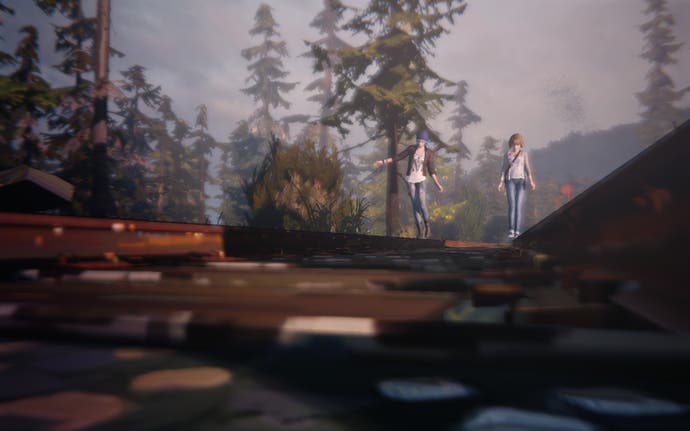
Who doesn't want the power to turn back the clock when they're eighteen and making stupid mistakes all over the place? Such urges might explain why, by the third episode, even the science fiction stuff is starting to earn its keep - possibly, of course, in part because Life is Strange has learned to couch its weirdest moments in the prosaic. Caulfield's ability to rewind time is inherently televisual, the kind of VCR wishful thinking that marks the divide between loving a TV show and writing fan-fiction about it. The whole thing has the feel of a daydream or a thought experiment that got out of hand, and what teenager doesn't know all about that stuff?
Speaking of thought experiments, one of the most interesting problems any game that plays around with cause and effect eventually faces is that we all know how it can end. Closure? It turns out that it's tricky stuff once you're muddling with time. You can tidy things away too neatly. Back to the Future, an obvious reference point for Life is Strange, is just about my favourite film in the whole world, and yet I'm still uncertain as to how to interpret its final scenes: I'm unsure whether they're a melodrama coming to a polite close or a dark comedy drawing you into the uncanny. Marty McFly has returned from 1955 where he's ironed out all of the flaws he perceives in his parents' characters, he's united them against all odds and even saved the life of his best friend. Then he wakes up the next morning in a world that just seems slightly creepy. His family has been robbed of their rough edges, and they now seem like strange automata, robotically and charmlessly successful in all endeavours. His dad's a famous writer, his brother has a big job and the shiny briefcase that came with it in the 1980s, and hey, they finally bought Marty that truck he always wanted. It leaves an odd taste in the mouth, and it's a relief when Doc returns to whisk us away to fix a fresh calamity.
I suspect that Life is Strange will conclude rather differently. There's player agency to take into account, of course - its shuffling of the deck should allow for the messiness of real-life even in a game as controlled as this. But more importantly there's also Dontnod, and the lessons it seems to be learning with each new episode. If Life is Strange is ultimately about the temptation to change the past, Dontnod's not blind to how such tampering messes with the future. And the future, odd as it might seem, often has a lot more to do with memory than imagination anyway.
